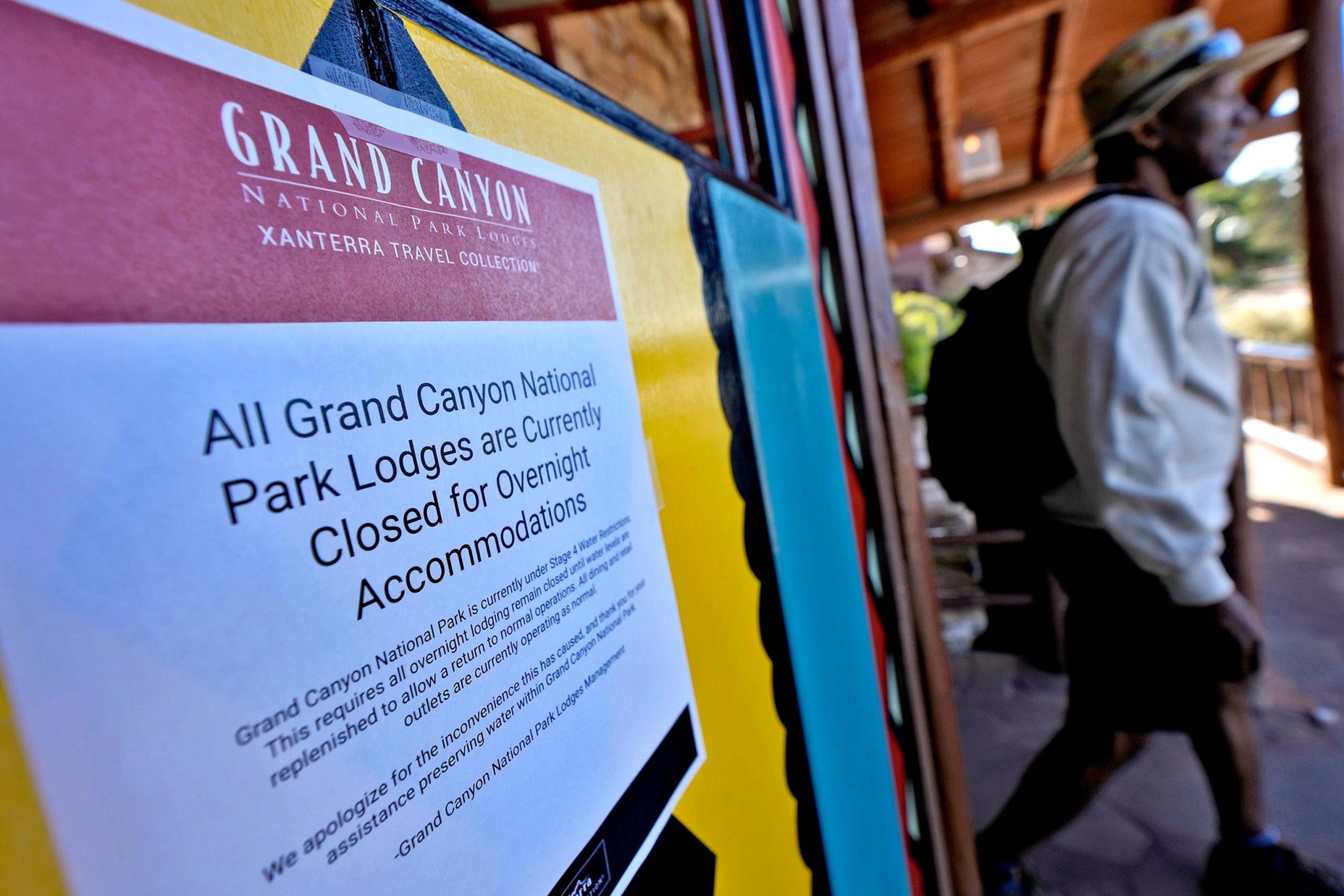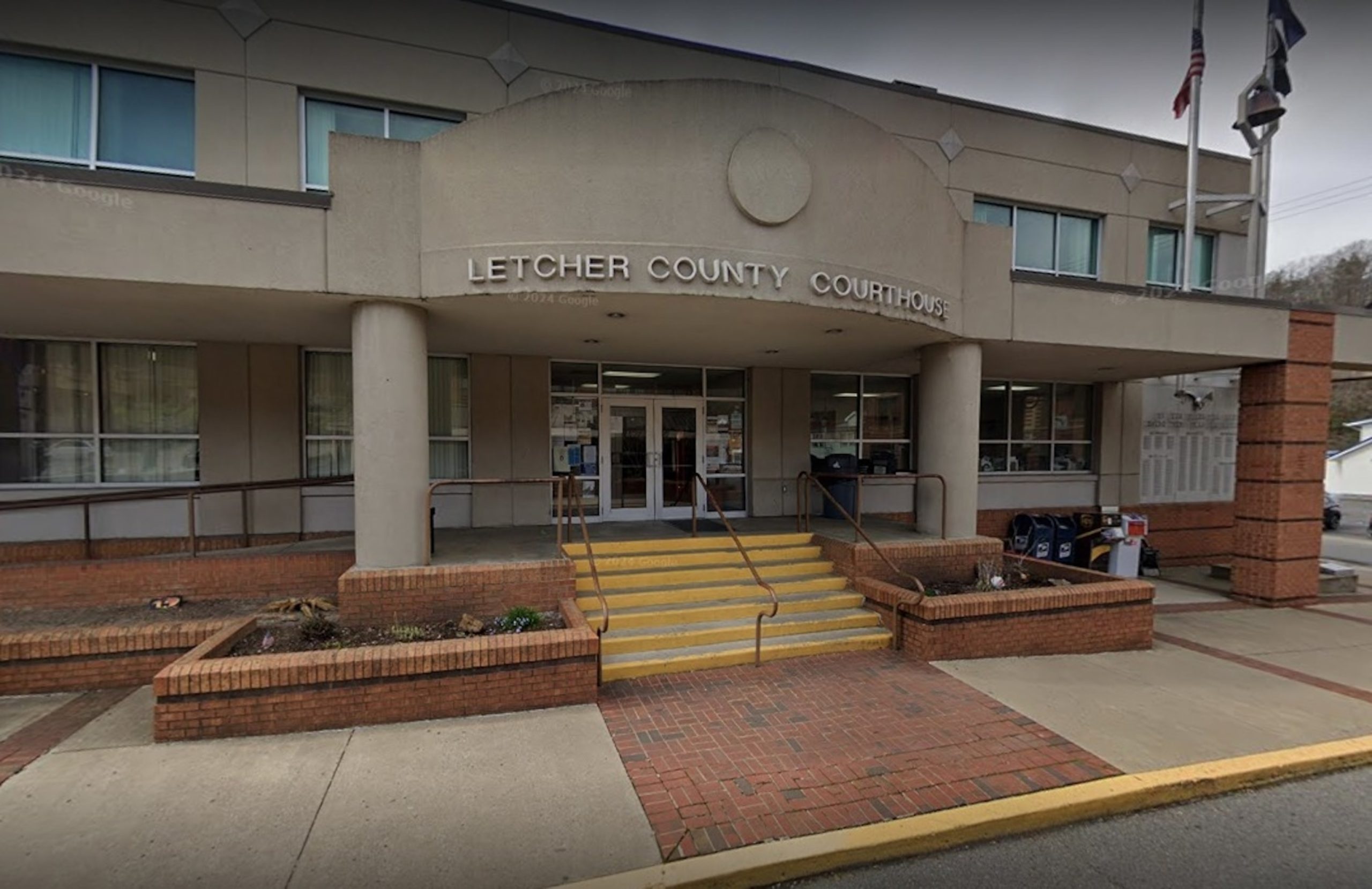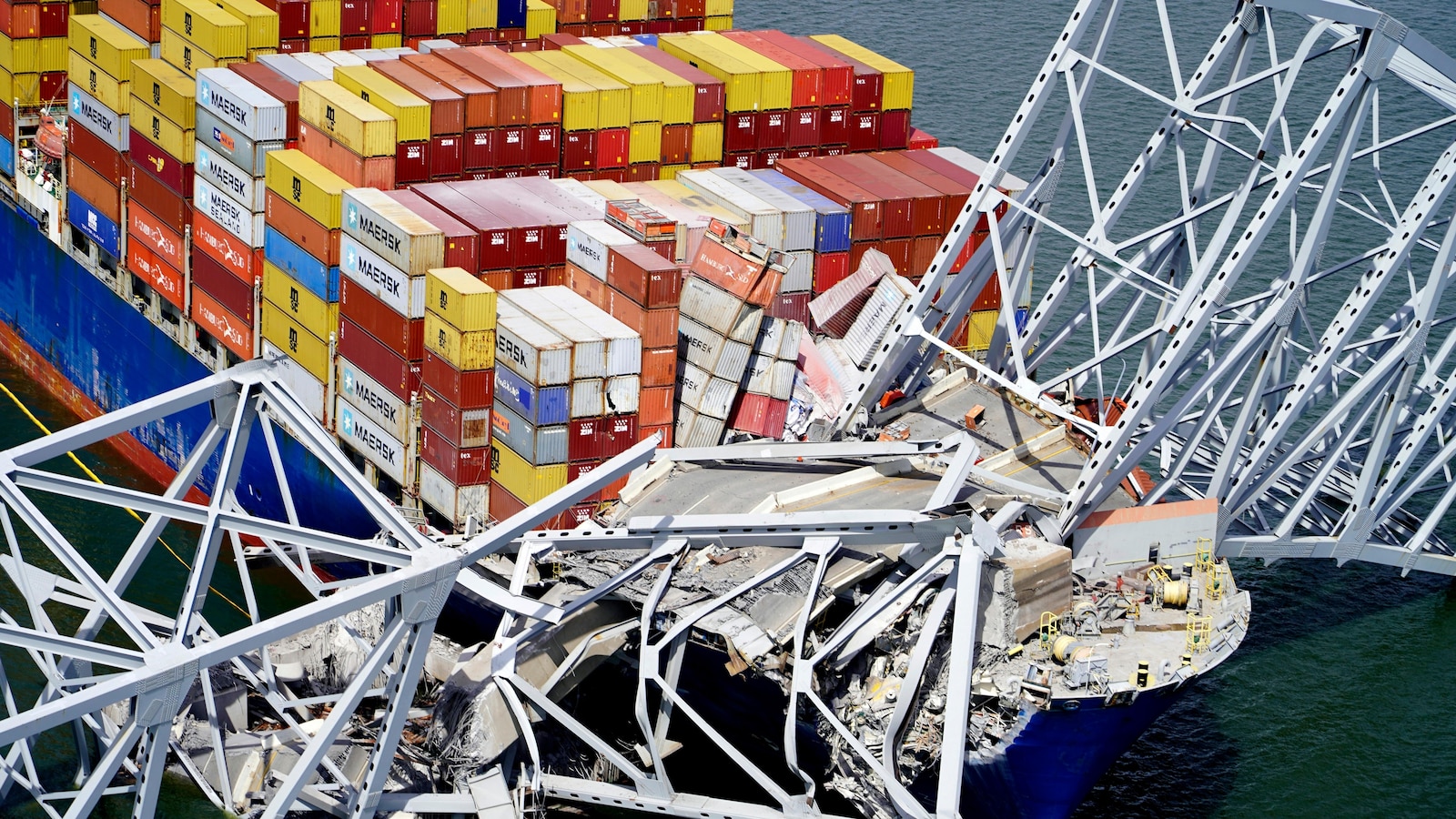Breaks in a 12-and-a-half-mile long water main at Grand Canyon National Park that emerged on the heels of catastrophic flash flooding have prompted officials to halt overnight lodging on the canyon’s South Rim ahead of what was expected to be a busy Labor Day weekend at one of the Seven Natural Wonders of the World.
Four significant breaks have been discovered in the Transcanyon Waterline that supplies water from the canyon for use throughout the park, officials said.
The busted waterline has forced park officials to temporarily halt park concessions and overnight accommodations, including the El Tovar Hotel, Bright Angel Lodge, Maswik Lodge, Phantom Ranch, Delaware North’s Yavapai Lodge and Trailer Village, officials said.
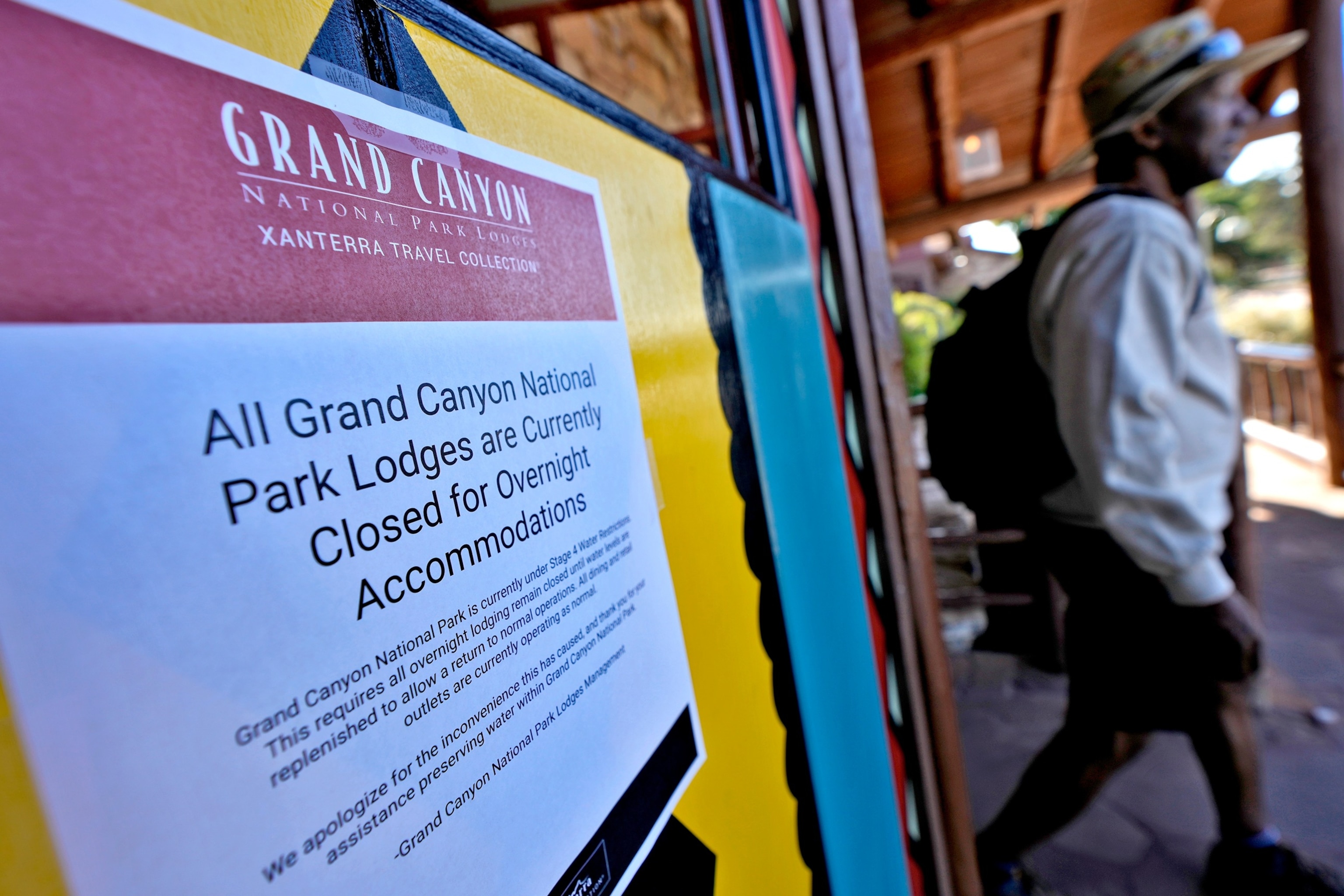
A sign denoting park lodge closures hangs on the door as a guest exits the Bright Angel Lodge, Aug. 29, 2024, in Grand Canyon, Ariz.
Matt York/AP
“These measures are crucial for ensuring the safety and sustainability of water resources. The goal is to restore full operational status for overnight guests on the South Rim as quickly as possible,” National Park officials said in a statement.
It was unclear when water will be fully restored, but officials warned visitors the restrictions will run throughout the Labor Day holiday.
As of Thursday, no water was being pumped to either the South or North Rims of the canyon, officials said.
Only dry camping will be allowed on the canyon’s South Rim, where most campground spigots have been turned off, officials said. Faucets in bathrooms on the South Rim are still working, as well as spigots at the Mather Campground check-in kiosk on the South Rim, but officials are asking visitors to conserve water.
“We are asking residents and visitors to help conserve water by limiting showers to five minutes or less, turning off faucets while shaving or brushing teeth, flushing toilets selectively, washing laundry with full loads, and reporting leaks to the appropriate offices,” park officials said.
The Grand Canyon will remain open for day use, but campfires and charcoal barbecues will be prohibited, officials said.
The announcement follows flash flooding this month that prompted more than 100 rescues, caused major damage to the small village of Supai at the bottom of the Grand Canyon and led to the death of a hiker who was washed away in the flood waters.
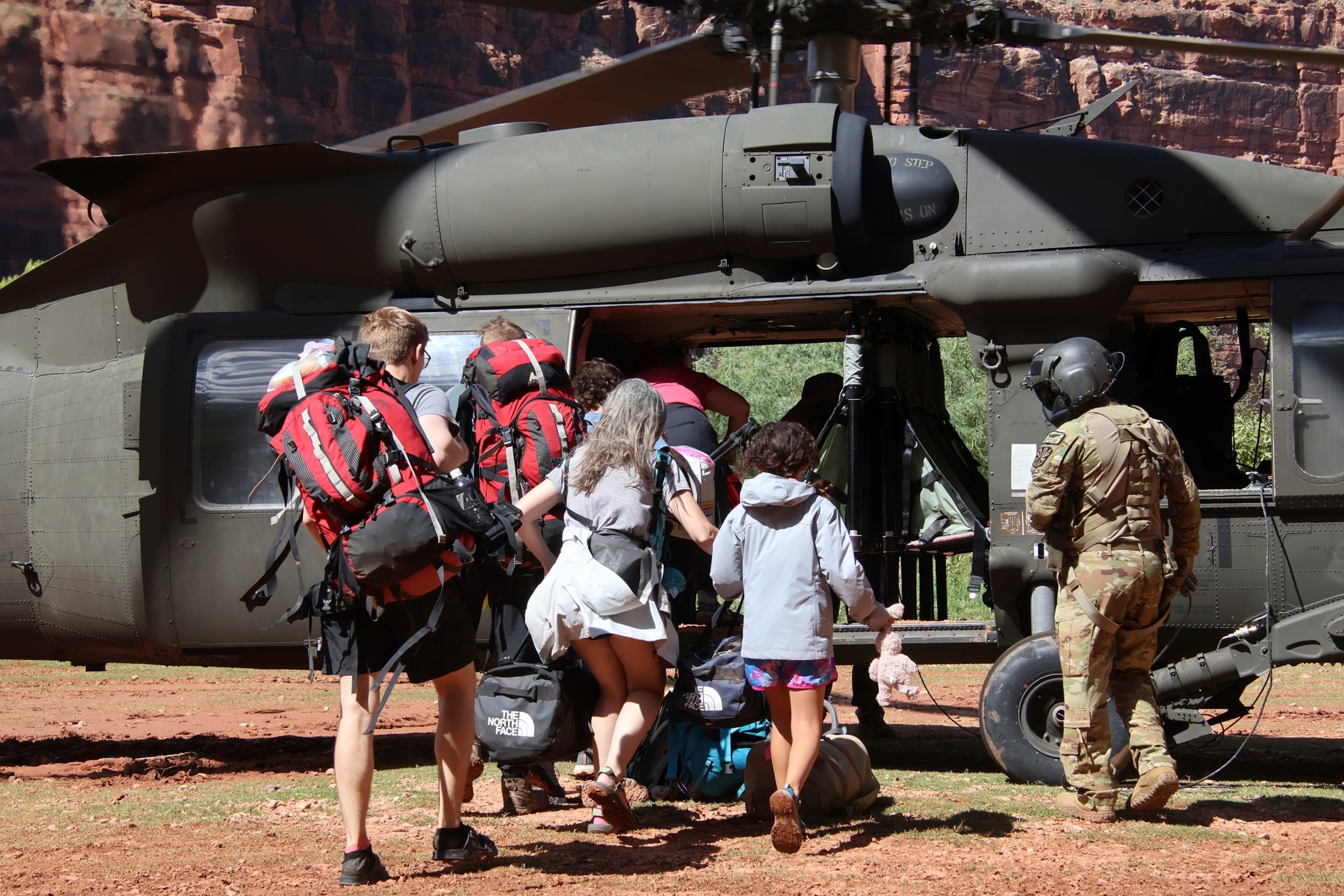
U.S. Army soldiers of the Arizona National Guard guide tourists trapped by flash flooding into a UH-60 Blackhawk, Aug. 24, 2024, on the Havasupai Reservation in Supai, Ariz.
Maj. Erin Hannigan/AP
But park officials said challenges from the waterline issues were occurring before the Aug. 22 flash flooding.
The Transcanyon Waterline was built in the 1960s and officials believe it has exceeded its expected lifespan. Since 2010, there have been more than 85 major breaks in the waterline that have disrupted water delivery, park officials said.
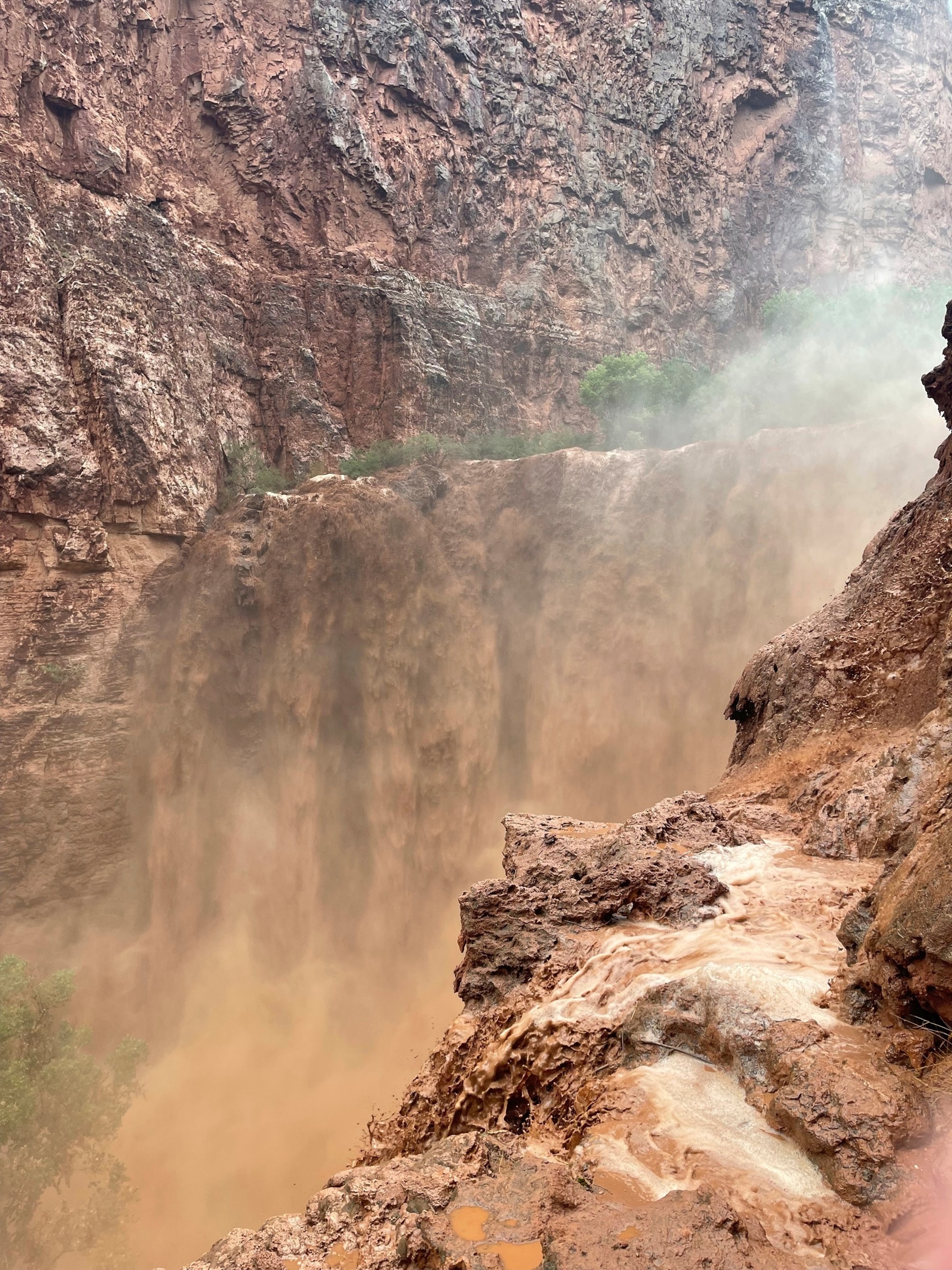
This photo provided by Chance and Carly Johnson shows the top of Mooney Falls at Grand Canyon National Park in Arizona on Aug. 22, 2024.
AP
The National Park Service recently started construction on a $208 million rehabilitation of the Transcanyon Waterline.
“This crucial investment in infrastructure will ensure the park can meet water supply needs for six million annual visitors and approximately 2,500 year-round residents,” park officials said in a statement.
Flash flooding in Arizona National Park has caused significant damage, including waterline breaks and infrastructure damage. The sudden and intense rainfall that occurred in the park has overwhelmed the drainage systems, leading to flash flooding in various areas.
The flash flooding has resulted in waterline breaks, which have disrupted water supply to certain parts of the park. This has not only affected the park’s visitors but also the wildlife that relies on these water sources for survival. The park authorities are working tirelessly to repair the waterlines and restore water supply as quickly as possible.
In addition to waterline breaks, the flash flooding has also caused damage to roads, trails, and other infrastructure within the park. This has made certain areas inaccessible to visitors and has disrupted the park’s operations. The park authorities are assessing the extent of the damage and developing a plan for repairs and restoration.
Flash flooding is a common occurrence in Arizona National Park, especially during the monsoon season. The park is located in a region prone to flash floods due to its topography and weather patterns. While the park authorities have implemented measures to mitigate the impact of flash flooding, such events can still cause significant damage and disruption.
Visitors to Arizona National Park are advised to stay informed about weather conditions and be prepared for sudden changes in weather. It is important to follow park regulations and guidelines during times of inclement weather to ensure safety and minimize damage to the park’s natural resources.
Overall, the recent flash flooding in Arizona National Park has highlighted the importance of being prepared for extreme weather events and the need for ongoing maintenance and upgrades to infrastructure to prevent damage. The park authorities are working diligently to address the aftermath of the flash flooding and restore the park to its natural beauty for visitors to enjoy.
